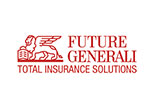Essential Mountain Driving Tips for Safe Journeys
Stay Safe on Steep Roads with These Mountain Driving Essentials
Mountain driving is very challenging and needs special skills as well as preparation. Whether it's a scenic vacation or just moving through highland regions, understanding the essentials of driving in hills can mean the difference between a safe journey and a dangerous situation. This guide will walk you through everything you need to know about tackling mountain roads safely and confidently.
Pre-Trip Preparations
Mountain travel begins long before you hit the road. The right preparation will prevent many of the common problems that can occur during your trip, ensuring your safety. Ensure that you have a valid car insurance with sufficient coverage before you begin your journey. Look for a car insurance company that offers the right coverage with reasonable car insurance premiums. The Indian traffic laws have made it mandatory for all vehicle owners to at least have a car insurance with third-party liability coverage.
Vehicle Maintenance
Your vehicle needs to be in top shape to handle mountain driving tips. A thorough inspection before your journey can prevent breakdowns in remote areas.
Tire Inspection
Tyres act as the link between your car and the road. Before taking your vehicle up the mountainous terrain, it is advisable that you:
-
You check your tyre's pressure when it is cold because the altitudes change its pressure reading.
-
You inspect the tyres for damage, bulge, or odd wear patterns
-
You check if your spare is inflated and ready
-
You check to see if the tread depth meets the safety threshold for wet and slippery conditions
-
Keep a set of tyre chains in your vehicle for winter months or anytime snow is forecasted
Fluid Levels
Mountain driving puts extra stress on your vehicle's systems. Check and top off:
-
Engine oil to ensure proper engine lubrication under steep climbing conditions
-
Brake fluid to maintain reliable stopping power on steep descents
-
Transmission fluid for smooth gear changes
-
Coolant to prevent overheating during long climbs
-
Power steering fluid for precise handling on winding roads
-
Windshield washer fluid for clear visibility
Lights and Wipers
Visibility is essential in mountain driving. Be sure:
-
All lights are working: headlights, taillights, brake lights
-
High beams are working at night
-
Turn signals are working
-
Windshield wipers move freely without streaking
-
Wiper blades are in good condition and can take heavy rain
Packing Fundamentals
Good packing can get you through many unexpected situations safely.
Emergency Kit
A well-stocked emergency kit should contain:
-
All first aid supplies and any prescription medications you might need
-
Basic kit for a screwdriver, plier, and wrench
-
Jumper cables and portable battery booster
-
Emergency flares or reflective triangles
-
Flashlight and spare batteries
-
Multi-tool with some emergency fixes
-
Duct tape and zip ties for improvised fixes
Ensure an emergency kit in your car, which contains an emergency first aid kit, a flashlight and an extra pack of batteries, some flares or reflective triangles, basic tools consisting of a wrench and screwdriver, water bottles, and some packaged non-perishable snacks that can last the day like granola bars and nuts. That can prove handy in the case of a breakdown or breakdown.
Clothing and Equipment
Mountain weather is unpredictable; one can pack:
-
Warm clothes for sudden changes in temperature
-
Raincoat and trousers waterproof clothing
-
Sturdy footwear for rough walking
-
Blankets or sleeping bags to be used during emergencies
-
Non-perishable food and water for at least 24 hours
-
Hand warmers and extra socks in cold weather
Pack clothes that may change with the mountain weather. It cools down fast above the mountains. Carry a warm jacket, gloves, hat, and good shoes, besides blankets, as a precaution in case of long detours or breakdowns.
Understanding Mountain Terrain
Mountain environments are quite different from what drivers may be used to. Drivers need to understand and respect these differences.
Road Conditions
Mountain roads require special attention to the following:
-
Road surfaces that range from smooth pavement to loose gravel
-
Sharp turns and switchbacks without warning
-
Narrow passages that require careful navigation
-
Warning signs of potential rockfall areas
-
Seasonal road maintenance schedules
-
Locations of bridges and tunnels
-
Emergency pullout areas and their locations
Weather Variability
Mountain weather can change in a short distance or time frame:
-
Clear skies can quickly become heavy rain or snow
-
Temperature can vary between valleys and peaks
-
Strong crosswinds on exposed sections
-
Morning fog in valleys and cloud cover
-
Sudden storms with lightning risks
-
Seasonal weather patterns affect road conditions
Safe Driving Practices
Proper driving techniques are essential for mountain safety.
Speed and Control
Maintain safe control of your vehicle by:
-
Driving at speeds that allow quick reactions to surprises
-
Using lower gears to maintain better control
-
Keeping a safe following distance from other vehicles
-
Applying brakes early and gently before curves
-
Watching for posted speed limits and advisory signs
-
Adjusting speed for weather conditions
Overtaking and Lane Discipline
Safe passing in the mountains requires:
-
Clear visibility of the road ahead
-
Proper use of turn signals well in advance
-
Awareness of passing zones and restrictions
-
Patience when following slower vehicles
-
Give careful attention to oncoming traffic
-
adequate lane positioning, especially in curves
Use of Headlights
Proper lighting helps you see and be seen:
-
Use headlights in tunnels and shaded areas
-
Switch on lights during weather changes
-
Flashlights to warn other drivers of hazards
-
Keep all lights clean and functional
-
Use fog lights when appropriate
-
Dim high beams for oncoming traffic
Overcoming Specific Challenges
Driving Uphill
Prepare for uphill sections by:
-
Building momentum before steep climbs
-
Selecting appropriate gear early
-
Monitoring engine temperature
-
Maintaining steady throttle pressure
-
Watching for slower traffic
-
Being prepared to stop quickly
Downhill Driving
Handle descents safely by:
-
Using engine braking to control speed
-
Shifting to a lower gear before descending
-
Avoiding frequent brake use
-
Maintaining a safe following distance
-
Watching for runaway truck ramps
-
Being prepared to stop in an emergency
Wildlife Awareness
Stay safe around mountain wildlife:
-
Watch for animal crossing signs
-
Scan roadsides constantly
-
Slow down in known wildlife areas
-
Use high beams when safe
-
Avoid swerving for small animals
-
Be aware of local wildlife patterns
Health and Well-being
Driver fitness is essential to mountain safety.
Fatigue
Don't become tired by
-
Taking regular rest stops every two hours
-
Obtaining a good night's sleep before a trip
-
Sharing the driving when practical
-
Being vigilant for signs of fatigue
-
Stopping for the night on long journeys
-
Not traveling during normal hours of sleep
Hydration and Nutrition
Maintain your energy and concentration
-
Hydrate at regular intervals
-
Bring healthy, easy-to-grab snacks with you
-
Not eating heavy meals before driving
-
Not drinking any alcohol
-
Being cautious about caffeine consumption
-
Plan stop times for food
Being ready for emergencies can save lives.
Handling Breakdowns
If your vehicle has problems:
-
Find a safe place to pull over
-
Activate hazard lights immediately
-
Set up warning triangles or flares
-
Stay with your car if possible
-
Keep emergency contact numbers handy
-
Know your exact location
Communication
Maintain contact ability:
-
Keep mobile phones fully charged
-
Carry a car charger or power bank
-
Save emergency service numbers
-
Share your route with family
-
Check network coverage areas
-
Consider a satellite phone for remote areas
Conclusion
Mountain driving mastery requires preparation, skill, and respect for the environment. This comprehensive guide should help you to enjoy mountain travel while putting safety first and foremost. Don't forget that things can change very fast, so keep alert and prepared. Take your time, trust your judgment, and don't be afraid to delay if conditions appear unsafe. With proper preparation and careful attention to these tips, you can confidently navigate mountain roads and create memorable experiences while keeping yourself and your passengers safe.














































